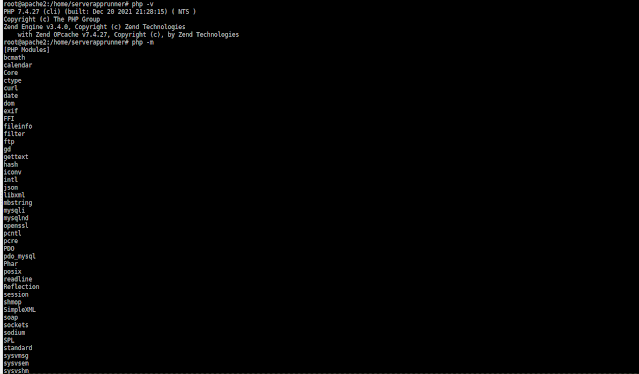Description: Here I have explained, How to rotate/replace key pairs on EC2 instances using Ansible
Setup:
- 2 Instances with same key pair
- 2 Key pair [one is existing and one is new]
- IAM user with Administrator privilege
- Old-key.pem [current key]
- New-Key.pem [New key]
After creating user, download CSV file for reference in variable file for authentication.
First creating variable file with key.vars file as follow:
access_key: "XXXXXX5UIGMCGDXXXXXX" secret_key: "XXXXXXVxsLGhbdrqz+I2IhnnrG+XXXXXXX" region: "us-west-2" #----> Example: "ap-south-1" old_key: "Old-key" #----> Upload this Pem file in the same directory with 400 Permission. new_key: "New-Key" system_user: "ubuntu" ssh_port: 22
- access_key = IAM user access key
- secret_key = IAM user secret key
- region = Infrastructure host region
- old_key = current / existing key name
- new_key = new key which need to replace
- system_user = ubuntu [ I have used ubuntu as operating system so default user is ubuntu]
--- - name: "Creation of the Ansible Inventory Of EC2 Instances in which Key To Be Rotated" hosts: localhost vars_files: - key.vars tasks: # --------------------------------------------------------------- # Getting Information of the EC2 instances in which Key To Be Rotated # --------------------------------------------------------------- - name: "Fetching Details About EC2 Instance" ec2_instance_info: aws_access_key: "{{ access_key }}" aws_secret_key: "{{ secret_key }}" region: "{{ region }}" filters: "key-name": "{{ old_key }}" instance-state-name: [ "running"] register: ec2 # ------------------------------------------------------------ # Creating Inventory Of EC2 With Old SSH-keyPair # ------------------------------------------------------------ - name: "Creating Inventory " add_host: name: "{{ item.public_ip_address }}" groups: "aws" ansible_host: "{{ item.public_ip_address }}" ansible_port: "{{ ssh_port }}" ansible_user: "{{ system_user }}" ansible_ssh_private_key_file: "{{ old_key }}.pem" ansible_ssh_common_args: "-o StrictHostKeyChecking=no" with_items: - "{{ ec2.instances }}" no_log: true - name: "Updating SSH-Key Material" hosts: aws become: true gather_facts: false vars_files: - key.vars tasks: - name: "Register current SSH Authorized_key file of the system user" shell: cat /home/"{{system_user}}"/.ssh/authorized_keys register: oldauth - name: "Creating New SSH-Key Material" delegate_to: localhost run_once: True openssh_keypair: path: "{{ new_key }}" type: rsa size: 4096 state: present - name: "Adding New SSH-Key Material" authorized_key: user: "{{ system_user }}" state: present key: "{{ lookup('file', '{{ new_key }}.pub') }}" - name: "Creating SSH Connection Command" set_fact: ssh_connection: "ssh -o StrictHostKeyChecking=no -i {{ new_key }} {{ ansible_user }}@{{ ansible_host }} -p {{ ansible_port }} 'uptime'" - name: "Checking Connectivity To EC2 Using Newly Added Key" ignore_errors: true delegate_to: localhost shell: "{{ ssh_connection }}" - name: "Executing the Uptime command on remote servers" command: "uptime" register: uptimeoutput - debug: var: uptimeoutput.stdout_lines - name: "Removing Old SSH Public Key and adding New SSH Public Key to authorized_key" authorized_key: user: "{{ system_user }}" state: present key: "{{ lookup('file', '{{ new_key }}.pub') }}" exclusive: true - name: "Print Old authorized_keys file" debug: msg: "SSH Public Keys in Old authorized_keys file are '{{ oldauth.stdout }}'" - name: "Print New authorized_keys file" shell: cat /home/"{{system_user}}"/.ssh/authorized_keys register: newauth - debug: msg: "SSH Public Keys in New authorized_keys file are '{{ newauth.stdout }}'" - name: "Renaming new Private Key Locally" delegate_to: localhost run_once: True shell: | mv {{ new_key }} {{ new_key }}.pem chmod 400 {{ new_key }}.pem - name: "Removing Old SSH public key From AWS Account" delegate_to: localhost run_once: True ec2_key: aws_access_key: "{{ access_key }}" aws_secret_key: "{{ secret_key }}" region: "{{ region }}" name: "{{ old_key }}" state: absent - name: "Adding New SSH public key to AWS Account" delegate_to: localhost run_once: True ec2_key: aws_access_key: "{{ access_key }}" aws_secret_key: "{{ secret_key }}" region: "{{ region }}" name: "{{ new_key }}" key_material: "{{ lookup('file', '{{ new_key }}.pub') }}" state: present

























































